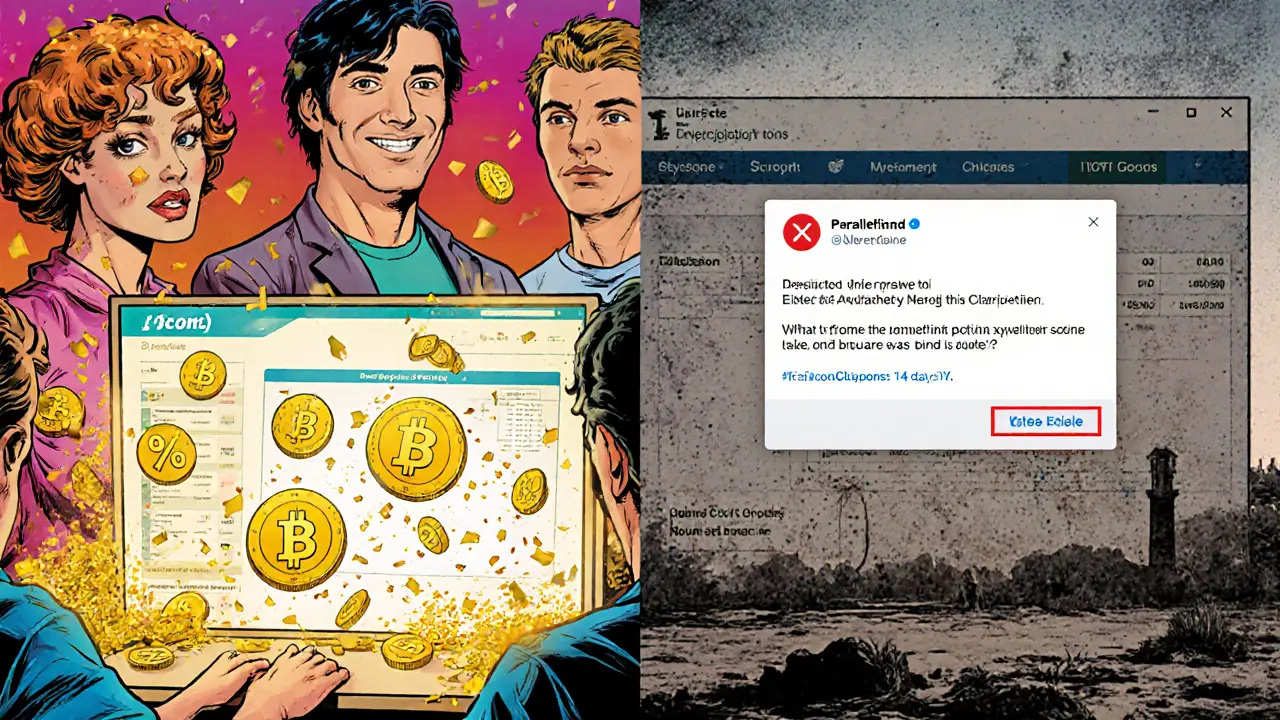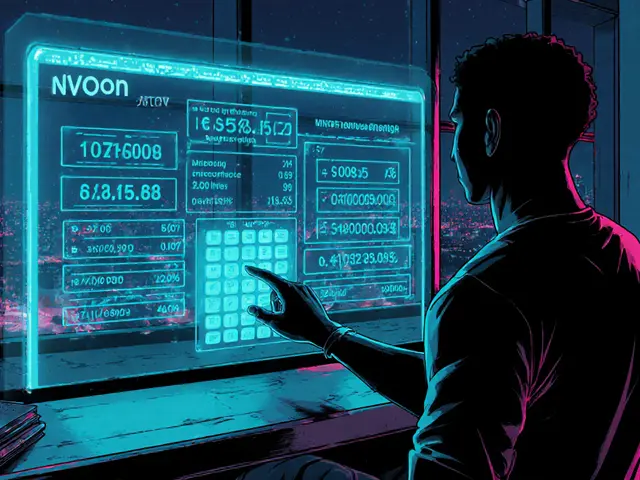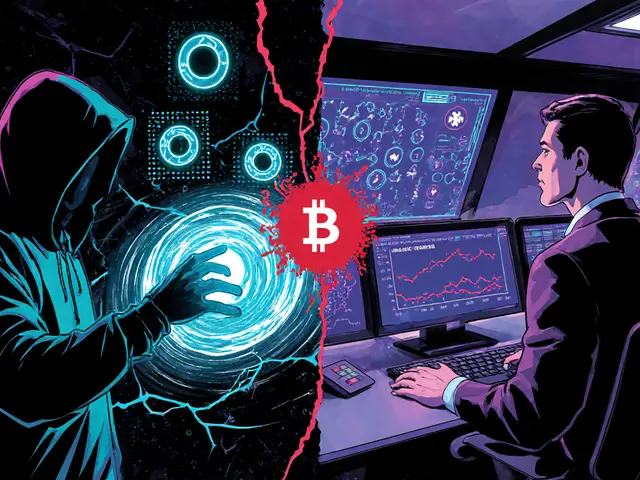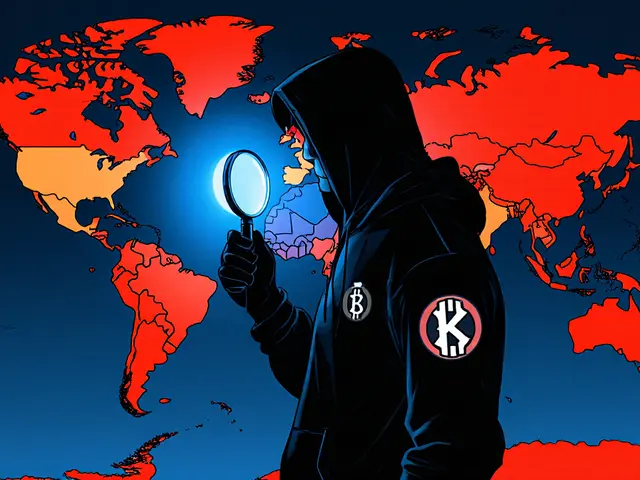Parallel Finance Crypto Exchange Review: Is It Still Safe to Use in 2025?
NFT Recovery Calculator
Calculate Your Potential NFT Loss
Based on Parallel Finance's August 2024 shutdown data: Only 15% of users recovered their NFTs. Estimate what you might have lost.
Parallel Finance was never a traditional crypto exchange like Binance or Coinbase. It was built as a DeFi platform on the Polkadot network, offering lending, borrowing, and a decentralized exchange called Dynamic Swap. But today, calling it a functioning exchange is misleading. The platform is barely operational, and users are still dealing with the fallout from its collapse in August 2024.
What Parallel Finance Actually Was
Parallel Finance launched in 2021 as a Polkadot parachain with a simple promise: let you earn more from your idle crypto. It combined lending, staking, and trading into one interface. Its native token, PARA, was used for governance and fees. Unlike centralized exchanges, it didn’t hold your keys. You connected your Polkadot.js or MetaMask wallet and traded directly on-chain.Its Dynamic Swap feature worked like Uniswap - using a constant product formula to match trades without order books. You could swap DOT for KSM, or add liquidity to PARA/DOT pools and earn fees. Back in 2021, during the DeFi boom, it was popular. At its peak, over $387 million was locked in the platform. That’s a lot for a niche chain like Polkadot.
What Went Wrong
The real problem wasn’t the tech - it was the execution. In mid-2024, Parallel Finance shut down its NFT lending service. That sounds minor, but it wasn’t. Users had deposited high-value NFTs like Bored Ape Yacht Club and Mutant Apes into vaults to borrow crypto. When the service ended, they were given six months to withdraw. Many didn’t. Why? Because the platform didn’t make it easy.There was no customer support chat. No email replies. No help center updates. Instead, users were told to interact with smart contracts on Etherscan - a process that requires coding knowledge. On-chain analyst 0xQuit estimated fewer than 15% of affected users recovered their NFTs. One Reddit user lost a $45,000 Mutant Ape because they didn’t know how to decode a transaction hash.
And then came the $500 late withdrawal fee. CEO Yubo Ruan publicly defended the charge, saying it covered “administrative costs.” That sparked outrage. No other DeFi protocol charges users to get their own assets back. It felt like a ransom.
Current State: A Shadow of Its Former Self
As of November 2025, Parallel Finance’s total value locked (TVL) is around $12.4 million - down 97% from its peak. The PARA token is trading at $0.00044, down 98.9% from its all-time high of $0.0042. Liquidity in its main trading pools has collapsed. The PARA/DOT pool, which once held $45 million, now has less than $2 million.The platform still technically runs its core lending protocol. You can still deposit DOT or KSM and earn interest. But the interface is outdated. Transactions fail often during network congestion. Support response times on Twitter jumped from hours to over two weeks after the shutdown. The official GitHub docs haven’t been updated since July 2024.
There’s no insurance. No compensation fund. No plan to return stranded NFTs. The team announced a “version 2.3” upgrade for November 2024, but only 38.7% of PARA token holders voted on it - the lowest turnout ever. That’s not community engagement. That’s apathy.

How It Compares to the Competition
| Feature | Parallel Finance | Aave | Coinbase Exchange | |--------|------------------|------|------------------| | Type | DeFi protocol | DeFi protocol | Centralized exchange | | TVL (Nov 2025) | $12.4M | $13B | $28B+ | | NFT Lending | Shut down (Aug 2024) | Never offered | Never offered | | Withdrawal Support | None | 24/7 live chat | 24/7 live chat | | KYC Required | No | No | Yes | | Asset Recovery | Requires Etherscan skills | Automatic | Instant | | Token (PARA/AAVE) | $0.00044 (down 98.9%) | $1.20 (stable) | N/A |Aave, for example, has been around longer, has 1,000x more TVL, and never shut down a major feature without a multi-year transition. Coinbase handles millions of users daily with clear customer service paths. Parallel Finance offered higher yields back then - 8-12% APY on DOT - but that advantage vanished when trust vanished.
Who Should Avoid It
If you’re not a blockchain developer, avoid Parallel Finance entirely. You don’t need to be a crypto expert to use Binance or Kraken. But you do need to be one to recover your assets from Parallel Finance. If you’ve ever said, “I just want to earn interest on my DOT,” this isn’t the place for you anymore.Even if you’re technically skilled, there’s no reason to risk it. The platform has proven it can’t be trusted with your assets. The smart contracts may be audited, but the team’s decisions show zero regard for user safety. When they shut down NFT lending, they didn’t warn users early. They didn’t build tools to help. They just pulled the plug.

Who Might Still Use It (And Why)
There are only two groups left using Parallel Finance:- High-risk yield farmers who believe the PARA token will rebound and are willing to gamble on a dead project.
- Polkadot purists who still believe in the ecosystem and think Parallel might rebuild - despite zero signs of it.
Even then, these users are not depositing new funds. They’re just watching old positions, hoping for a miracle. Some are even helping others recover lost NFTs for free on Twitter - not because they believe in Parallel, but because they’re angry.
The Bottom Line
Parallel Finance was once a promising piece of Polkadot’s DeFi puzzle. But it became a cautionary tale. The tech was solid. The team had experience. But they prioritized growth over stability, and profits over protection.Today, it’s not a crypto exchange. It’s a graveyard for NFTs and a warning sign for anyone thinking about putting assets into a DeFi platform without clear exit routes.
If you still have assets locked in Parallel Finance, your only option is to try recovering them manually. There’s no help coming from the team. If you don’t know how to use Etherscan or interact with smart contracts, you’ve likely lost those assets for good.
There’s no recovery plan. No refund. No apology. Just silence.
Frequently Asked Questions
Is Parallel Finance still operational in 2025?
Yes, but only partially. Its core lending protocol still functions, allowing users to deposit DOT or KSM and earn interest. However, its NFT lending service was permanently shut down in August 2024, and its exchange liquidity has collapsed. Customer support is nearly nonexistent, and the platform has not updated its documentation since mid-2024.
Can I still trade PARA tokens on Parallel Finance?
You can still swap PARA for DOT or KSM using the Dynamic Swap feature, but liquidity is extremely low. The PARA/DOT pool has less than $2 million in liquidity, down from $45 million in early 2023. Slippage is high, and trades often fail. The token’s price has dropped 98.9% since its peak, and trading volume is minimal.
What happened to users’ NFTs after the August 2024 shutdown?
Thousands of high-value NFTs - including Bored Ape Yacht Club, Mutant Apes, and Doodles - were locked in user vaults when the service was terminated. Users were given six months to withdraw them manually via smart contract interaction. Fewer than 15% succeeded. Most users lacked the technical skills to recover their assets, and Parallel Finance offered no tools, guides, or support to help. The $800,000 in stranded NFTs remains inaccessible.
Was Parallel Finance ever audited for security?
Yes. Its smart contracts were audited by Blocksec and PeckShield in March 2022. The code itself was technically secure. But audits don’t protect against bad governance or poor user experience. The real failure wasn’t hacking - it was the abrupt shutdown of NFT lending without a safe exit path for users. Security isn’t just about code - it’s about trust and responsibility.
Should I invest in the PARA token now?
No. The PARA token has lost 98.9% of its value and trades at $0.00044 as of late 2024. There is no clear path to recovery. The platform has no active development roadmap, no user support, and no institutional backing. Price predictions vary wildly, but none are backed by real usage data. Investing in PARA now is speculation on a dead project, not a sound financial decision.
Are there safer alternatives to Parallel Finance on Polkadot?
Yes. Acala (now Karura) and Moonbeam offer similar DeFi services with better track records, higher liquidity, and active development teams. Acala’s lending protocol has maintained stable TVL and offers transparent governance. Moonbeam supports Ethereum-compatible DeFi apps, giving users access to established protocols like Aave and Compound. Both have functional customer support and regular updates - unlike Parallel Finance.






23 Comments
Louise Watson
November 8 2025Parallel Finance is dead. No drama. No hope. Just gone.
Liam Workman
November 8 2025Man, I still remember when PARA was trading at $0.004. We all thought we were onto something big. Now? It’s like watching a ghost haunt its own tomb. The tech was solid, but trust? Gone. No one’s coming to save your NFTs. You either knew how to use Etherscan… or you lost everything. Sad, but real.
Benjamin Jackson
November 9 2025I used to stake DOT there for the 12% APY. Thought it was genius. Turns out, genius doesn’t mean safe. I got lucky-I withdrew before the NFT mess. But I still check the TVL every week, hoping for a miracle. Spoiler: it never comes. Don’t get me wrong, I’m not mad at the devs-I’m mad at myself for believing in a project that didn’t care about its users.
Cydney Proctor
November 10 2025Oh, so now we’re romanticizing DeFi failures? ‘Solid tech’? Please. If your protocol can’t handle a graceful exit for users, it’s not ‘innovative’-it’s negligent. And calling it a ‘cautionary tale’? That’s the bare minimum. It’s a funeral. With a website.
Kevin Mann
November 12 2025OKAY SO LET ME TELL YOU WHAT HAPPENED TO MY MUTANT APE 😭 I DEPOSITED IT IN AUGUST 2023 FOR A LOAN. I WASN’T EVEN THINKING ABOUT WITHDRAWING. THEN BAM-NO SUPPORT, NO EMAIL, NO EXPLANATION. JUST A POST ON TWITTER SAYING ‘USE ETHERSCAN’. I’M A GRAPHIC DESIGNER. I DON’T KNOW WHAT A TRANSACTION HASH IS. I LOST $42K. I CRIED FOR THREE DAYS. I’M STILL NOT OVER IT. AND THE TEAM? SILENT. NO APOLOGY. NO COMPENSATION. JUST… SILENCE. THIS ISN’T DEFI. THIS IS A SCAM WITH SMART CONTRACTS.
Kathy Ruff
November 13 2025For anyone still holding PARA: if you’re not a dev, don’t waste time trying to recover assets. The smart contracts are fine, but the team abandoned their users. Acala and Moonbeam are the real alternatives. They have docs, support, and updates. Parallel? It’s a museum exhibit now. With no admission fee.
Robin Hilton
November 13 2025Look, I don’t care if it’s DeFi or CeFi. If you lock my NFT and then charge me $500 to get it back? That’s not a fee. That’s extortion. And the fact that this was built on Polkadot? That’s just embarrassing for the whole ecosystem. We’re supposed to be decentralized, but this team acted like a hedge fund with a GitHub repo.
Grace Huegel
November 13 2025I used to think DeFi was the future. Now I just feel… empty. I lost my Doodles. I didn’t even realize I’d lost them until a friend told me. I didn’t know how to check. I thought it was safe because it was ‘on-chain’. But safety isn’t about blockchain. It’s about people. And Parallel’s people were never there.
Sarah Scheerlinck
November 14 2025Why are people surprised? Everyone knew Parallel was a shitcoin project. They pumped PARA to attract dumb money. Then they vanished. If you invested because of APY you deserve to lose. Crypto is not a bank. Stop crying. Learn to read code or get out.
Jacque Hustead
November 15 2025I know it’s easy to hate on them, but I still feel bad for the people who lost NFTs. I’ve helped three strangers on Reddit recover theirs just by walking them through Etherscan. It’s not hard-it’s just tedious. But no one taught them. That’s the real failure. Not the code. The lack of care.
Robert Bailey
November 16 2025Still holding some PARA. Not because I think it’ll bounce. But because I want to see if they ever come back. Maybe they’ll do something right for once. Maybe not. Either way, I’m not putting more in. Just watching. Like a vigil.
Natalie Nanee
November 16 2025They didn’t just fail-they insulted us. Charging $500 to get your own NFT back? That’s not a fee. That’s a middle finger. And the fact that they called it ‘administrative costs’? Please. They were robbing the graveyard.
Vivian Efthimiopoulou
November 18 2025The fundamental flaw in Parallel Finance was not technical-it was ethical. DeFi, at its core, is supposed to empower users through transparency and autonomy. Yet, when the moment of truth arrived, the team chose opacity, obfuscation, and financial extraction over user stewardship. The audit reports were irrelevant. The real failure was moral. The absence of a duty of care. That is not innovation. That is betrayal dressed in blockchain.
Janna Preston
November 19 2025Wait, so if I deposited DOT and didn’t touch it, can I still get interest? Or is that frozen too? I just want to know if my DOT is still earning something. I don’t care about PARA or NFTs anymore. Just… my DOT.
Meagan Wristen
November 21 2025I’m so sorry to everyone who lost their NFTs. I’ve been there-lost something digital that meant a lot. It’s not just money. It’s memory. I wish the team had just said, ‘We messed up. Here’s how we’ll fix it.’ Instead, they ghosted. That’s the worst kind of failure.
Becca Robins
November 21 2025parallel finance?? lmao i thought they were gonna be the next aave but then they just… vanished. like a ghost in a crypto movie. and now the site looks like it’s from 2021. my nft is still there. i think. maybe. idk how to check. help??
Alexa Huffman
November 23 2025For those still wondering whether to use Parallel: if you wouldn’t leave your car keys with a mechanic who then locked your car and charged you to get them back, don’t leave your assets with a platform that does the same. This isn’t DeFi. It’s a trap with a whitepaper.
gerald buddiman
November 23 2025I’ve been trying to recover my Bored Ape for over a year. I’ve watched YouTube tutorials. I’ve asked on Discord. I’ve even paid someone $200 to help me… and they ghosted too. Now I just check the pool balance every morning. It’s like watching my grief slowly evaporate. I’m not angry anymore. I’m just… tired.
Arjun Ullas
November 25 2025It is imperative to understand that the collapse of Parallel Finance is not an isolated incident. It is symptomatic of the broader DeFi ecosystem's failure to institutionalize user protection mechanisms. The absence of formal dispute resolution, insurance protocols, or even basic communication channels constitutes a systemic risk. Investors must demand governance structures that prioritize fiduciary responsibility over speculative yield.
Steven Lam
November 25 2025you guys are acting like this is a tragedy. it’s crypto. you knew the risks. if you didn’t know how to use etherscan then you shouldn’t have been there. stop whining. go use coinbase if you want hand holding.
Finn McGinty
November 26 2025It’s funny how people call this a ‘cautionary tale’ like it’s some noble lesson. No. It’s a corpse. And the fact that people are still defending it as ‘solid tech’ shows how badly we’ve been conditioned to forgive bad actors if the code compiles. They didn’t just fail-they weaponized ignorance. And now, we’re all supposed to applaud their ‘innovation’? I’d rather see a real failure than this kind of silent, calculated cruelty.
Evan Koehne
November 27 2025So the ‘DeFi revolution’ is just a casino where the house doesn’t even bother to hide the dice? Cool. I’ll stick with cash under the mattress. At least it doesn’t charge me to get my own money back.
gerald buddiman
November 29 2025Just got an email from someone who recovered their NFT. Took 14 months. Used a Python script. I’m not even mad anymore. Just… impressed. If you’re reading this and you’re stuck: DM me. I’ll send you the script. No charge. No drama. Just… help.